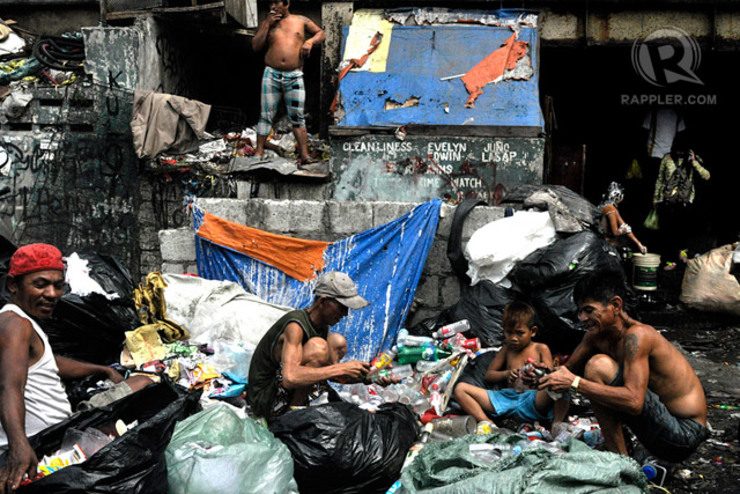SUMMARY
This is AI generated summarization, which may have errors. For context, always refer to the full article.

MANILA, Philippines – Strong growth prospects for the Philippine economy in 2015, even if the Asian Development Bank (ADB) has lowered it from an earlier estimate of 6.7% to 6.4%, might mean nothing for the country’s poor.
While the figure continues to reflect a robust expansion of 6.4%, Richard Bolt, ADB Philippine country director, said translating growth into poverty reduction still remains a development challenge in the Philippines.
In a press briefing on Thursday, September 25, Bolt explained the country’s expected growth is attributed to the increasing output in the services and manufacturing sector.
Private construction, for instance, is projected to expand in 2015 as building permits jumped to 11.2% year-on-year in the second quarter of 2014, said Bolt.
The economy grew by 6.4% in the second quarter this year, according to the government, making the Philippines the 2nd fastest growing country in Asia in terms of gross domestic product (GDP).
Poverty incidence
But poverty incidence among Filipino families has almost remained constant since 2006 despite the country’s high economic growth.
From 3.8 million in 2006, there were 4.2 million poor Filipinos in 2012, according to the National Statistical Coordination Board. What’s more, natural disasters have kept many Filipinos below the poverty line.
Bolt pointed out that along with the lack of poverty reduction measures, the economy will also be haunted by insufficient job generation.
Unemployment in the Philippines fell to 6.7% in July from the 7% recorded in April 2014, but the percentage of full-time workers also reported a decline.
From 65% in July 2013, full-time workers comprised 62% of the employed in July 2014. The number of part-time workers, meanwhile, rose from 34.3% to 36.2%.
“Job generation is insufficient. Underemployment remains high at 18.3% of those employed because new jobs are largely part-time or informal,” ADB said in a statement.
What to do?
To address this pressing concern, Bolt said the country should enhance public-private partnerships, develop capital markets, and boost access to finance.
“These are critical areas for the Philippines to grow,” he said.
Bolt also said the Philippines needs to address youth job readiness through vocational education and the government’s K12 program.
32% of the 2.78 million jobless Filipinos in July 2014 are high school graduates, followed by college graduates at 23.2%, and college undergraduates at 13.2%.
Meanwhile, economists at the ADB commended President Aquino’s economic reform programs, and hoped his agenda would be passed on to the next administration in 2016. – Rappler.com
Add a comment
How does this make you feel?
There are no comments yet. Add your comment to start the conversation.